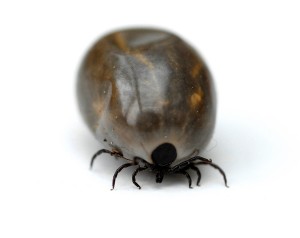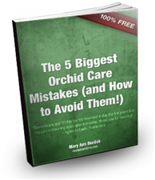 Among the biggest misconception about orchids is that they are parasites. Most people will conclude this because in the wild most orchids are found to grow in the branches of trees and some even cling on bushes. Although we can consider some orchids parasitic, this is entirely because of a different reason. Let me shed some light on what “real” parasitic orchids are.
Among the biggest misconception about orchids is that they are parasites. Most people will conclude this because in the wild most orchids are found to grow in the branches of trees and some even cling on bushes. Although we can consider some orchids parasitic, this is entirely because of a different reason. Let me shed some light on what “real” parasitic orchids are.
Many species of orchids are epiphytes. This literally means “on top of plant”. They are called this because they usually attach themselves to the branches of trees. They are also referred to as air plants because they absorb moisture and nutrients from the air that surrounds them. This is also why most orchids require proper ventilation to thrive.
The orchids that hang from tree branches and birches get the nutrients not from the tree itself but the surroundings. They live “up there” because this is where they can get the best of the best nutrients from its surroundings, such as from dead leaves and bird droppings. That is why to classify them as parasitic because of their chosen location is completely untrue.
On the other hand, there are orchids that are considered parasitic. These orchids rely on their “partners” to provide them food. These partners are fungi.
Some orchid species cannot create their own food through photosynthesis. So what they do is they rely on the fungi on their roots to create the food for them. These are the more appropriately called “parasitic orchids”.
In reality parasitic plants, like mistletoe, are considered parasites because they cause damage to their host plants. Orchids that cling and hang from trees are actually somewhat beneficial. Their host trees are considered more of a stage for them to thrive rather than a host to steal nutrients from.
Lastly, yes there are such orchids that are considered parasitic or semi-parasitic. These orchids are from the genus Corallorhiza. But they are quite rare and can only be found in the wild. They do feed off of a tree, but as I said they are quite rare.
Orchids are one of the most resilient plants in the world. It can thrive in almost any place in the world. Considering them to be parasites is maybe the biggest misconception there is.
What do you think about orchids being parasites? Do you have any other information about them? Please leave a comment below.
To allow orchids to thrive, it helps to replicate their natural environment, this really cool tool will help you do just that: Orchid Potting Tool




Actually, epiphyte means “on top of plant,” not “up in the air.” An epiphyte is a plant that lives on top of another plant. And there are plenty of other examples of parasitic orchids, e.g. Dipodium. Leaflessness and subsequent utilization of the mycorrhizal fungi in a parasitic relationship has evolved multiple times in the orchids.
Hi Ryan,
Thanks for your correction. You’re right they do mean on top of plant, and they are also commonly referred to as air plants, since many times they grow on tree branches and absorb moisture and nutrients from the air. Orchids are not parasites because they do not get their nutrients at the expense of the trees that they are growing on. People many times assume they are parasitic since they are growing on another living being, but they are not causing harm and are therefore not parasitic. I will update this article though. 🙂 Thank you! – Mary Ann
technically utilizing a tree for support is part of being a parasite,this is from the Merriam Webster dictionary, the orchid falls under number 3, now if we said it was in the act of parasitism (number 2) then only a few would be considered under this word.
par·a·site noun \ˈper-ə-ˌsīt, ˈpa-rə-\
Definition of PARASITE
1
: a person who exploits the hospitality of the rich and earns welcome by flattery
2
: an organism living in, with, or on another organism in parasitism
3
: something that resembles a biological parasite in dependence on something else for existence or support without making a useful or adequate return
— par·a·sit·ic also par·a·sit·i·cal adjective
— par·a·sit·i·cal·ly adverb
See parasite defined for English-l
Thanks for your comment, but you are missing a key factor here. In order to be a parasite to the tree, the orchid would have to harm the tree. The parasite attaches at the detriment of the host. (Which is how we meant the use of the word parasite in this post.) Since the orchid attaches and does not cause any harm, it is not a parasite. Commensalism is a more accurate term for what you are talking about. – Mary Ann
Actually you’re missing the point. The definition of a parasite doesn’t signify harm, it’s simply one creature taking advantage of another, which orchids do. And who knows if they actually harm or not, perhaps they’re like all parasites, they receive benefits and do not harm while small, the rule may not apply once large. And being that orchids anchor to trees, who’s to say that they aren’t exchanging/influencing host DNA (I’ve yet to see any studies to the effect). Seems like people who love orchids don’t like the fact that they’re parasitic, but there’s nothing wrong with that.
I appreciate your viewpoint, but the definition of a parasite is one creature taking advantage of another at the host’s expense. If there is no harm done, that would be considered commensalism. 🙂 But I agree with you about the trees. Who is to say they aren’t influencing them? – Mary Ann
While the dictionary may have one definition of parasitism, in science the host of the parasite MUST be harmed, otherwise it is commenalism or mutualism. Also, the fungi that you are referring to is called mycorrhizae. Nearly all land plants form a relationship with this fungi and some scientists believe that these fungi are what made the transition to land possible for plants! However orchids are especially cool because they have ectomycorrhizae. This means that the fungus surrounds the natural roots of the plant and does not penetrate the roots. Normally, the fungus gives the plant nutrients (mainly phosphorous) in exchange for carbohydrates. Some orchid species do not give the fungus carbohydrates but continue to receive nutrients. This is an example of parasitism. Does this clear it up for you?
Exactly. 🙂 Thank you for your comment. So overall, orchids are not parasites except in those cases where they are actually taking nutrients from the fungus and not giving anything in return AND the rare genus Corallorhiza. – Mary Ann
I do not know a lot about orchids except they are gorgeous and l enjoy them.Hi Joan and Wayne.Wish l had one e-mail to write to you.
So if an orchid was getting its nutrients from a tree, than the orchid would be considered parasitic correct?
Hi Tommy – Yes, that would be correct, but those are very rare. As stated in the article: Lastly, yes there are such orchids that are considered parasitic or semi-parasitic. These orchids are from the genus Corallorhiza. But they are quite rare and can only be found in the wild. They do feed off of a tree, but as I said they are quite rare. 🙂 Thanks! – Mary Ann